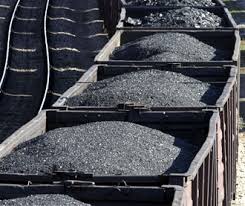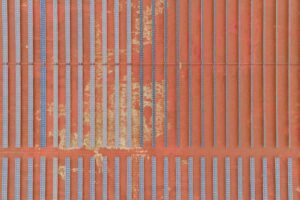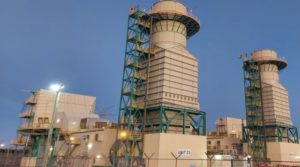The International Energy Agency has added its voice to the chorus of market analysts and global financial institutions warning that new mega coal projects, like the mine and port development planned for Queensland’s Galilee Basin, are economically and environmentally unsustainable.
The IEA’s Medium-Term Coal Market Report, released on Monday, predicts a slowing in demand for the world’s second-largest energy source, and has trimmed its five-year forecast of global coal use to 2.3 per cent a year, or 6.35 billion metric tons of coal equivalent, to 2018 – down from the 2.6 per cent annual growth predicted last year.
In China – which remains the most important factor in global coal markets, accounting for more than half of global coal use last year – growth in demand for coal slowed to 4.7 per cent in 2012; its second-lowest in a decade, according to the Paris-based IEA, which cited the country’s hydro-power production and lower-than-expected economic growth.
“Because of financing issues, low current coal prices and environmental constraints, a significant number of projects will not be realised. Furthermore, projects still at the feasibility stage are likely to be delayed,” the report says. “The current low coal prices raise concerns about the economic feasibility of projects in the Galilee Basin.”
This is not not the first time that doubt has been cast on the feasibility of Queensland mega mines – including a $10 billion, government sanctioned development of the massive and as-yet untapped Carmichael coal deposit and large-scale rail and port infrastructure investment, which would be used to export coal from 2016.
Last month, in a Greenpeace commissioned report, financial analyst Tim Buckley warned that the Galilee project was uneconomic – “a high cost coal product in a low priced coal market with an uncertain future.” And just yesterday, an HSBC-commissioned Oxford University report said changes in China’s future coal consumption were likely to have significant consequences for Australian coal investments like this, and could lead to stranded assets.
But it is the first time that the IEA has weighed in on the topic. And the strongest statement on the future viability of the fossil fuel came from IEA executive director Maria van der Hoeven, who noted, quite simply, that “coal in its current form is simply unsustainable.”
“Coal-fired heat and power generation is the biggest single source of carbon dioxide (CO2) emissions resulting from fuel combustion today,” said van der Hoeven.
“More than three-fifths of the rise in global CO2 emissions since 2000 is due to the burning of coal to produce electricity and heat. And we should not overlook the health problems tied to local pollution produced by coal combustion. Radical action is needed to curb greenhouse gas emissions, yet that radical action is disappointingly absent.”
But where governments are failing to act, the market appears to be making a shift. Several mining and infrastructure projects worldwide have been delayed, postponed or cancelled, as plummeting coal prices erode the projects’ net value and current perceptions of an oversupplied market lead investors to act more cautiously than in the past.
Nonetheless, new export mining capacity of 120 million tonnes per year (Mtpa) is classified as probable to come online by 2018, with more that half of that growth attributable to Australia, which will increase both thermal and metallurgical coal capacity.
Australia’s major projects in the Galilee basin alone account for a targeted capacity of 160 Mtpa. The Alpha Coal project (32 Mtpa) by GVK-Hancock Coal received environmental approval subject to conditions in 2012. The consortium is currently trying to find financing for the $US10 billion budget. GVK also holds stakes in the Kevin’s Corner project, with an ultimate capacity of 30 Mtpa.
The China First Coal project by Waratah Coal targets an operational capacity of 40 Mtpa. With a required funding of $US8.8 billion, the project entails the construction of four underground mines, two surface mines and associated coal handling and processing facilities. And Adani’s Carmichael Coal project (60 Mtpa) is currently undergoing the environmental impact screening process.
But the IEA says that, given the huge investment costs, current low coal prices and oversupply of the seaborne market, these projects are unlikely to be realised during the outlook period, particularly if China reduces demand, as is widely predicted.
According to the IEA, Chinese Low-Demand Case (CLDC), China’s coal imports in 2018 nearly halve and decrease by 76 Mtce relative to the BCS (base case scenario). In this scenario, exports from high-cost producers in Australia and the US are most affected, with Australian exports in 2018 at 23 Mtce lower in the CLDC than in the BCS.
In which case, says the IEA, “many of the new projects announced will be delayed, postponed or simply abandoned.”
“Not only do current low coal prices decrease the cash flow of current operations, but they also shrink the net value of the developing projects,” says the report.
“Thus, the huge number of announced capacity expansion and greenfield projects needs rethinking. Every major coal exporter (i.e. Indonesia, Australia, Russia, United States, Colombia and South Africa, as well as Canada for met coal) has expansion plans. The number and size of the new projects announced in Australia is particularly significant. Most involve simultaneous mining, rail and port capacity commitments. Whereas low coal prices have not hindered many expansions from coming online in recent years, their persistency will cause many projects to be put on hold until the coal market improves.”
But will the coal market improve? Not according to China, whose 12th Five-Year Plan (FYP) (2012-17) includes strict new policies on energy and coal intensity. The nation’s GDP growth and electricity demand are projected to decouple due to intensified energy-efficient measures and structural change towards less power-intensive sectors.
Remarkably, says the report, the projected decrease in electricity intensity of GDP leads to a reduction of coal consumption equal to the aggregated annual German and British coal consumption.
Moreover, adds the IEA, China has set ambitious targets to diversify primary energy sources for power generation. “The installation of significant renewable energy, gas and nuclear power plant capacities is projected to decrease the share of coal in power generation, curbing Chinese coal demand.”
Another important factor is whether coal-fired power plants will maintain the higher efficiency path of the last decade over the outlook period.
According to the IEA’s van der Hoeven, that is looking unlikely: “Progress on CCS is effectively stalled, and a meaningful carbon price is missing,” she notes.
“Moreover, even though we’ve known how to build efficient, super-critical coal-fired power plants since the 1960s, most of the coal plants built since then – and a large proportion of the ones being developed today – are of the inefficient, sub-critical kind.
“If these sub-critical plants under development in India and in ASEAN states (including Indonesia) were completed with the latest technology, it would save as much CO2 as will be saved by all the wind turbines in Europe.”










